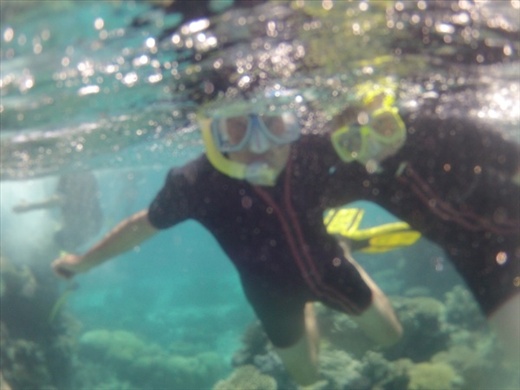Snorkeling the Great Barrier Reef is a nice way to spend a birthday. And we are happy to report that it appears to be healthy, at least the bit we visited.
It's a truly special place but I get annoyed when the Great Barrier Reef is described as the world's largest "organism," visible even from space. Yes, you can see it from space but it isn't any more a single "organism" than are the Amazon rainforest, the Serengeti or even New York City, all of which can also be seen from space. The Great Barrier Reef is an ecosystem, a biosphere perhaps. It is composed of countless individuals from thousands of species, both plant and animal. In fact it isn't even "a" reef but many reefs stretching 2300 kilometers along the Queensland coast.

The Calypso took us to Opal Reef, 50 km out from Port Douglas. Just as at Ningaloo, we elected to snorkel because the water was so shallow as to make diving superfluous. The coral was mostly vibrant with a rainbow of fish but the Great Barrier Reef just didn't live up to my expectations.

When I mentioned this to Jurgen and Stella Freund, a couple we met afterwards, they said that to truly appreciate its splendor you must spend a week or more on a "live aboard" dive boat on the northern part of the reef. And they should know! Jurgie and Stella are divers, professional photographers and authors. They wrote the book The Coral Triangle in association with the World Wildlife Fund and were instrumental in getting support for new legislation to protect Australia's greatest attraction. Check out his photos at jurgendfreund.photoshelter.com. But we're not fanatic divers, don't like long periods on boats and get claustrophobic when surrounded by more than 4 people. So we'll have to settle for a bit of snorkeling.